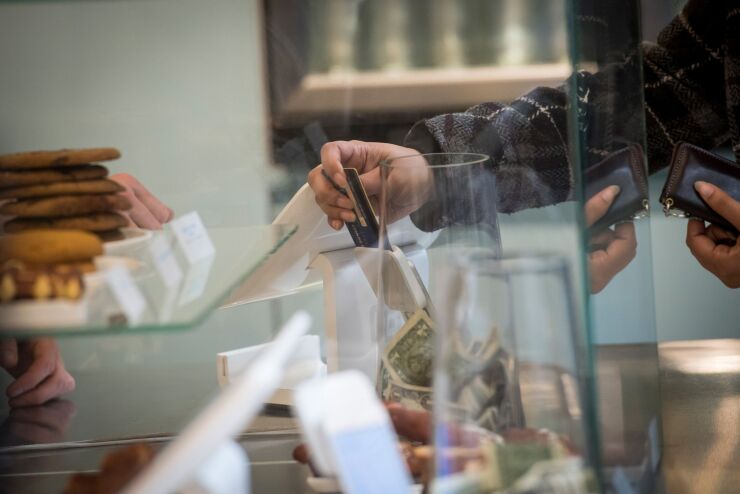The average interest rate on variable-rate credit cards reached a quarter-century high of 18.03% this week as lenders responded to rate hikes by the Federal Reserve.
Rates charged to cardholders have increased by 1.5 percentage points since June 25, according to data from Bankrate.com, a consumer finance website. The data, which uses three-month trends, is based on rates for 130 credit cards issued by 50 large consumer lenders.
This week's average rate is the highest Bankrate has estimated since January 1996, when rates climbed to 18.12%. The data goes back to 1985, and the highest recorded rate of 19% came in 1991.

As credit card rates have climbed, the margin between what card issuers charge their customers and the Federal Reserve's prime rate has risen to 12.53%. That margin is "not that different from the last rate-hike cycle," said Ted Rossman, senior industry analyst at Bankrate.
Since March, the Fed has enacted a series of rate hikes, bringing the prime funds rate up to 5.50%. Meanwhile, credit-card delinquency rates remain near historic lows.
The credit card industry has long been one of the banking industry's most profitable niches. And margins have improved recently, Rossman said. "I don't think all of the recent increases have fully baked in," he added.
Large credit card banks recorded an annualized return on assets of 6.93% last year, the highest level since 2006, according to Federal Reserve
During Rohit Chopra's tenure as director of the Consumer Financial Protection Bureau, rising profit margins on credit cards have caught the agency's attention.
In January, the CFPB said in a blog post that it will look at whether the largest credit-card issuers have engaged in
Regulators are "looking to ensure that there is robust and fair competition," the bureau said in the blog post at the time. A credit-card market controlled by a small number of major firms can lead to "parallel, anti-competitive shifts in business practices," the CFPB stated.
Last month, in another blog post, a CFPB official
The Consumer Financial Protection Bureau has opened an inquiry into whether the largest issuers are engaging in unfair or anti-competitive practices. JPMorgan Chase, Citigroup and the rest of the top eight control 70% of the $1 trillion credit card market.
"The apparent mismatch between credit card interest rates and the risk and cost of lending may explain part of the markets' outsized profits," wrote Margaret Seikel, a financial analyst at the agency.
To combat rising interest rates for consumers, the CFPB has said that it is planning to make comparing, switching and refinancing credit cards simpler for consumers.
Consumers paid $120 billion in credit-card interest and fees between 2018 and 2020, roughly $1,000 a year per household, the CFPB reported in January.






